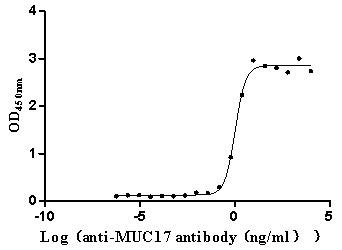Recombinant Mouse T-cell surface glycoprotein CD3 epsilon chain (Cd3e), partial
In Stock-
货号:CSB-YP004931MO
-
规格:¥1836
-
图片:
-
(Tris-Glycine gel) Discontinuous SDS-PAGE (reduced) with 5% enrichment gel and 15% separation gel.
-
Based on the SEQUEST from database of Yeast host and target protein, the LC-MS/MS Analysis result of CSB-YP004931MO could indicate that this peptide derived from Yeast-expressed Mus musculus (Mouse) Cd3e.
-
Based on the SEQUEST from database of Yeast host and target protein, the LC-MS/MS Analysis result of CSB-YP004931MO could indicate that this peptide derived from Yeast-expressed Mus musculus (Mouse) Cd3e.
-
-
其他:
产品详情
-
纯度:Greater than 90% as determined by SDS-PAGE.
-
基因名:
-
Uniprot No.:
-
别名:Cd3eT-cell surface glycoprotein CD3 epsilon chain; T-cell surface antigen T3/Leu-4 epsilon chain; CD antigen CD3e
-
种属:Mus musculus (Mouse)
-
蛋白长度:Extracellular Domain
-
来源:Yeast
-
分子量:11.9 kDa
-
表达区域:23-108aa
-
氨基酸序列DAENIEYKVSISGTSVELTCPLDSDENLKWEKNGQELPQKHDKHLVLQDFSEVEDSGYYVCYTPASNKNTYLYLKARVCEYCVEVD
Note: The complete sequence including tag sequence, target protein sequence and linker sequence could be provided upon request. -
蛋白标签:N-terminal 6xHis-tagged
-
产品提供形式:Liquid or Lyophilized powder
Note: We will preferentially ship the format that we have in stock, however, if you have any special requirement for the format, please remark your requirement when placing the order, we will prepare according to your demand. -
缓冲液:Tris-based buffer,50% glycerol
-
储存条件:Store at -20°C/-80°C upon receipt, aliquoting is necessary for mutiple use. Avoid repeated freeze-thaw cycles.
-
保质期:The shelf life is related to many factors, storage state, buffer ingredients, storage temperature and the stability of the protein itself.
Generally, the shelf life of liquid form is 6 months at -20°C/-80°C. The shelf life of lyophilized form is 12 months at -20°C/-80°C. -
货期:3-7 business days
-
注意事项:Repeated freezing and thawing is not recommended. Store working aliquots at 4°C for up to one week.
-
产品描述:Recombinant Mouse T-cell surface glycoprotein CD3 epsilon chain (Cd3e)是经过重组制备的小鼠T细胞表面糖蛋白CD3 epsilon链。CD3 epsilon链是T细胞受体(TCR)复合物的重要组成部分,负责传递外界抗原刺激并激活T细胞。CD3 epsilon链通过与其他CD3亚单位和TCR亚单位相互作用,形成一个稳定的T细胞表面信号传导复合物。这个复合物的形成是T细胞活化和免疫应答的关键步骤。j9九游会登录入口首页生物重组Cd3e蛋白由酵母表达系统制备,具有较高的纯度和稳定性,可用于分子生物学、免疫学和免疫治疗研究中。通过研究Cd3e蛋白的结构和功能,科学家们可以更好地了解TCR复合物的组装和信号传导机制,揭示T细胞的激活和调节过程。Cd3e的研究不仅对于基础的免疫学理解具有重要意义,还在免疫治疗领域具有潜在应用价值。通过调控Cd3e蛋白的功能,可以影响T细胞的活化和功能,从而干预免疫应答、治疗免疫相关的疾病。
-
Datasheet & COA:Please contact us to get it.
相关产品
问答及客户评论
We are interested in item CSB-YP004931MO. For the current lot, would you please tell me the buffer before the product was lyophilized? What do you recommend for reconstitution?
Would you have this information available to share?
The stock of this protein has just run out. The new lot is already under production and we will rush the preparation.
1. This protein has been delivered in liquid form in the following two buffers before: 1) PBS, pH 7.4, 50% glycerol; 2) 20 mM Tris-HCl, 0.5 M NaCl, pH 8.0, 50% glycerol.
2. If you would like Lyophilized Powder, we will add 6% trehalose to help dissolving later. The lead time will be extended for 3 working days. You can reconstitute the lyophilized protein directly with sterile deionized water. The general reconstitution method is as follows
We recommend that this vial be briefly centrifuged prior to opening to bring the contents to the bottom. Please reconstitute protein in deionized sterile water to a concentration of 0.1-1.0 mg/mL.
We recommend to add 5-50% of glycerol (final concentration) and aliquot for long-term storage at -20℃/-80℃. Our default final concentration of glycerol is 50%. You could use it as reference.
Any more questions, feel free to contact us. Nice day.
靶点详情
-
功能:Part of the TCR-CD3 complex present on T-lymphocyte cell surface that plays an essential role in adaptive immune response. When antigen presenting cells (APCs) activate T-cell receptor (TCR), TCR-mediated signals are transmitted across the cell membrane by the CD3 chains CD3D, CD3E, CD3G and CD3Z. All CD3 chains contain immunoreceptor tyrosine-based activation motifs (ITAMs) in their cytoplasmic domain. Upon TCR engagement, these motifs become phosphorylated by Src family protein tyrosine kinases LCK and FYN, resulting in the activation of downstream signaling pathways. In addition of this role of signal transduction in T-cell activation, CD3E plays an essential role in correct T-cell development. Participates also in internalization and cell surface down-regulation of TCR-CD3 complexes via endocytosis sequences present in CD3E cytosolic region.
-
基因功能参考文献:
- The data show that CD3epsilon chain couples to Cbl via simultaneous binding of both proteins to Numb, thus mediating TCR degradation PMID: 26507128
- IL-17-producing CD3(bright) gammadelta T cells responded promptly and strongly to pneumococcal infection and during skin inflammation. PMID: 25385067
- these results suggest that CD3zeta can be degraded by two pathways: SLAP/c-Cbl, which targets internalized cell surface CD3zeta dependent on TCR signaling, and LAPTM5, which targets intracellular CD3zeta independent of TCR signaling. PMID: 24638062
- these results indicate that membrane association of the CD3epsilon signaling domain is required for optimal thymocyte development and peripheral T cell function. PMID: 24899501
- These results suggest that proteasome-mediated degradation is involved in hypophosphorylated LAT and PLCgamma1 in Dow2-induced anergic T cells. The novel CD3-specific Ab, Dow2, may provide us with a unique tool for inducing immunosuppression PMID: 24595757
- that Nck recruitment to the TCR is fundamental to mount an efficient T cell response in vivo, and that the Nck-CD3epsilon interaction may represent a target for pharmacological modulation of the immune response. PMID: 24470497
- Structure of murine CD3epsilon complexed with the mitogenic anti-CD3epsilon antibody 2C11 enabled structural comparisons of antibody-liganded and unliganded forms of CD3epsilon revealing that antibody binding does not induce any substantial rearrangements within CD3epsilon. PMID: 22262845
- CFTR dysfunction in T cells can lead directly to aberrant immune responses in CD3+ lymphocytes PMID: 20724552
- analysis of the transgenic integration site in immunodeficient tgepsilon26 human CD3epsilon transgenic mice PMID: 21203507
- Polymorphisms of the CD3varepsilon ectodomain exist in mice,some of which lead to amino acid substitutions which cause structural changes and affect anti-CD3 antibody binding. PMID: 20638133
- the stalks of the CD3 proteins may be critical in transmitting part of the activation signal directly through the membrane. PMID: 19956738
- Results suggest that generation of CD3varepsilon chain isoforms with different N-terminal sequence and pI is a general phenomenon. PMID: 19616027
- We demonstrate that the intra-cytoplasmic (IC) domain of CD3epsilon plays a critical role in regulating TCR expression on DP thymocytes. PMID: 19819936
- inability of Nck to bind to the CD3epsilon proline-rich sequence in thymocytes after TCR ligation PMID: 15972658
- That CD43 costimulation was responsible for elevated cytokine/chemokine activity was confirmed at the transcriptional level by real-time PCR for IFN-gamma and CCL5, and by ELISA for IFN-gamma. PMID: 16246302
- insulin-specific Tregs producing IL-10, TGF-beta, and IL-4 are enhanced by suppression of CD3epsilon in a mouse model of autoimmune diabetes PMID: 16628253
- GRK2 is primarily involved in arresting G protein-coupled receptor signals, its interaction with CD3 epsilon may provide a novel means whereby the TCR can negatively regulate signals generated through G protein-coupled receptors. PMID: 17420248
- FcgammaRIIB, a low-affinity immunoglobulin G Fc receptor, and CD3 are involved in cerebellar functions. PMID: 17502348
- CD3epsilon-mediated signal transduction pathway is essential for this transformation process PMID: 17507663
- mouse CD3 epsilon chains N-terminal charged residues have roles in generating isoforms modulating antigen T cell receptor-mediated signals and T cell receptor-CD3 interactions PMID: 17561508
- CD3epsilon proline-rich sequence amplifies weak TCR signals by promoting synapse formation and CD3epsilon phosphorylation PMID: 18566390
- have identified distinct roles for individual motifs of CD3epsilon in the preTCR-mediated differentiation and proliferation PMID: 19342663
- functional role for the CD3 epsilon lipid-binding domain in T cell biology PMID: 19542373
- importance of the conformational change in CD3epsilon for the activation of T cells PMID: 19671929
显示更多
收起更多
-
亚细胞定位:Cell membrane; Single-pass type I membrane protein.
-
数据库链接:
KEGG: mmu:12501
STRING: 10090.ENSMUSP00000099896
UniGene: Mm.210361
Most popular with customers
-
Recombinant Human papillomavirus type 16 Protein E7 (E7) (Active)
Express system: E.coli
Species: Human papillomavirus type 16
-
Recombinant Mouse Microtubule-associated protein tau (Mapt) (Active)
Express system: Mammalian cell
Species: Mus musculus (Mouse)
-
Express system: Mammalian cell
Species: Homo sapiens (Human)
-
Recombinant Dog B-lymphocyte antigen CD20 (MS4A1)-VLPs (Active)
Express system: Mammalian cell
Species: Canis lupus familiaris (Dog) (Canis familiaris)
-
Recombinant Human Microtubule-associated protein tau (MAPT) (Active)
Express system: Mammalian cell
Species: Homo sapiens (Human)
-
Recombinant Human Mucin-17 (MUC17), partial (Active)
Express system: Mammalian cell
Species: Homo sapiens (Human)
-
Recombinant Macaca fascicularis Trophoblast glycoprotein (TPBG), partial (Active)
Express system: Mammalian cell
Species: Macaca fascicularis (Crab-eating macaque) (Cynomolgus monkey)
-
Recombinant Human Serotransferrin(TF) (Active)
Express system: Mammalian cell
Species: Homo sapiens (Human)


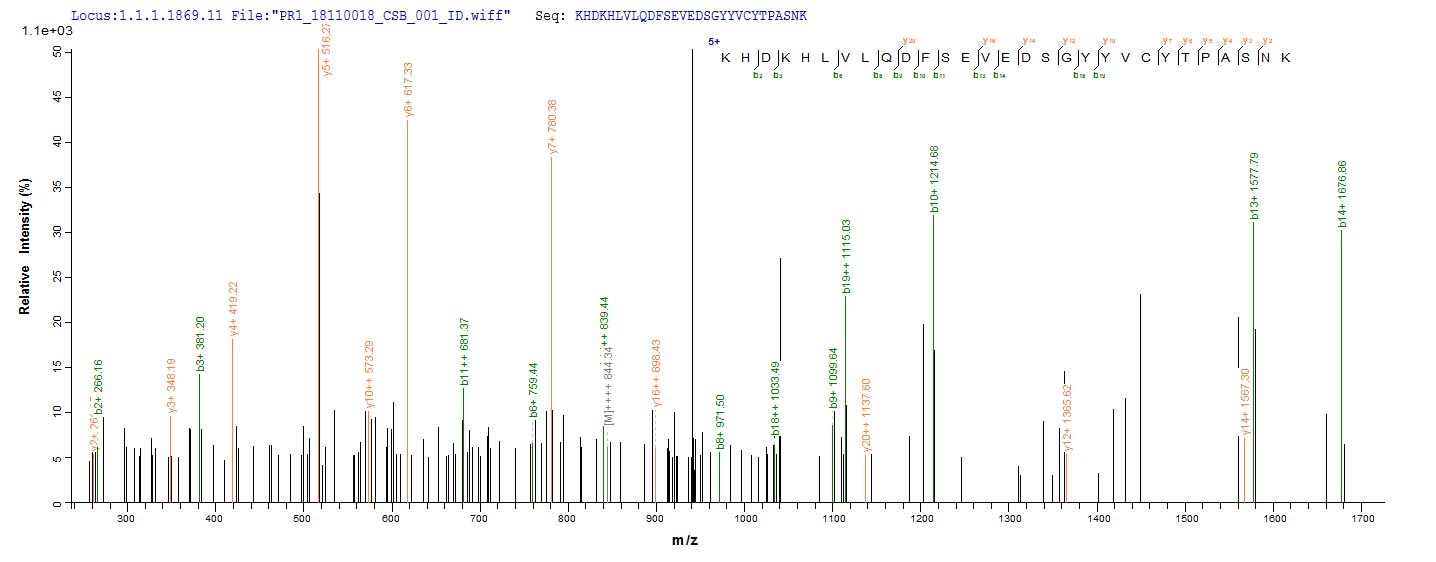
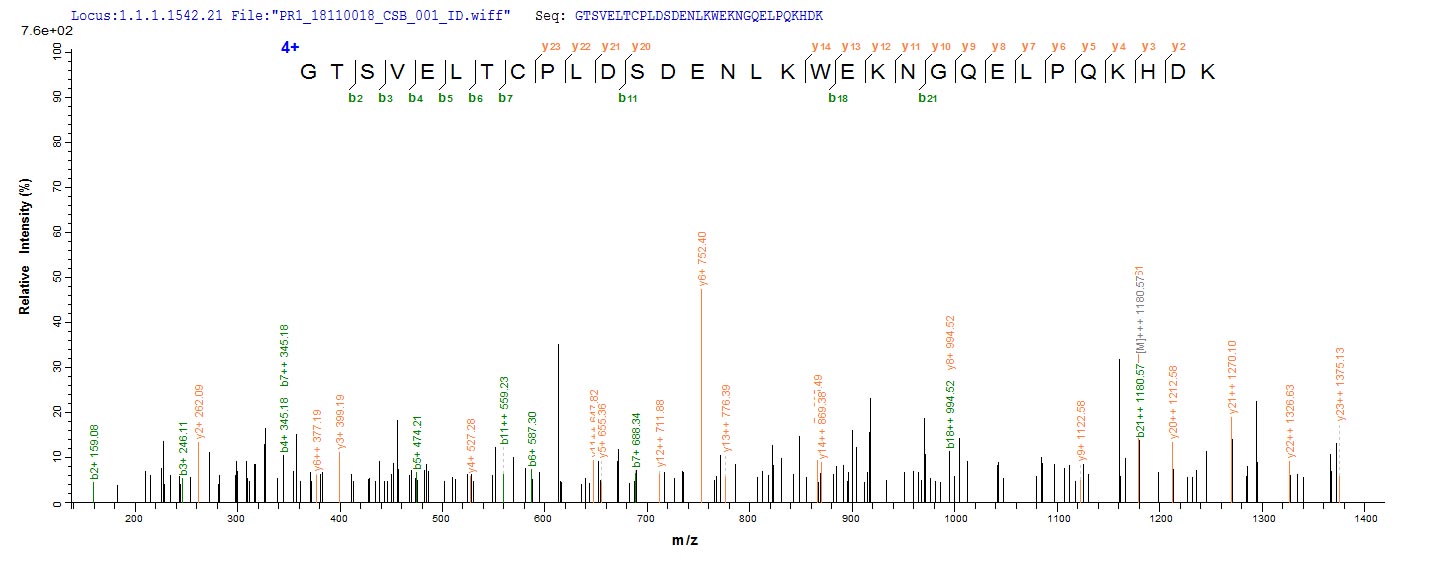

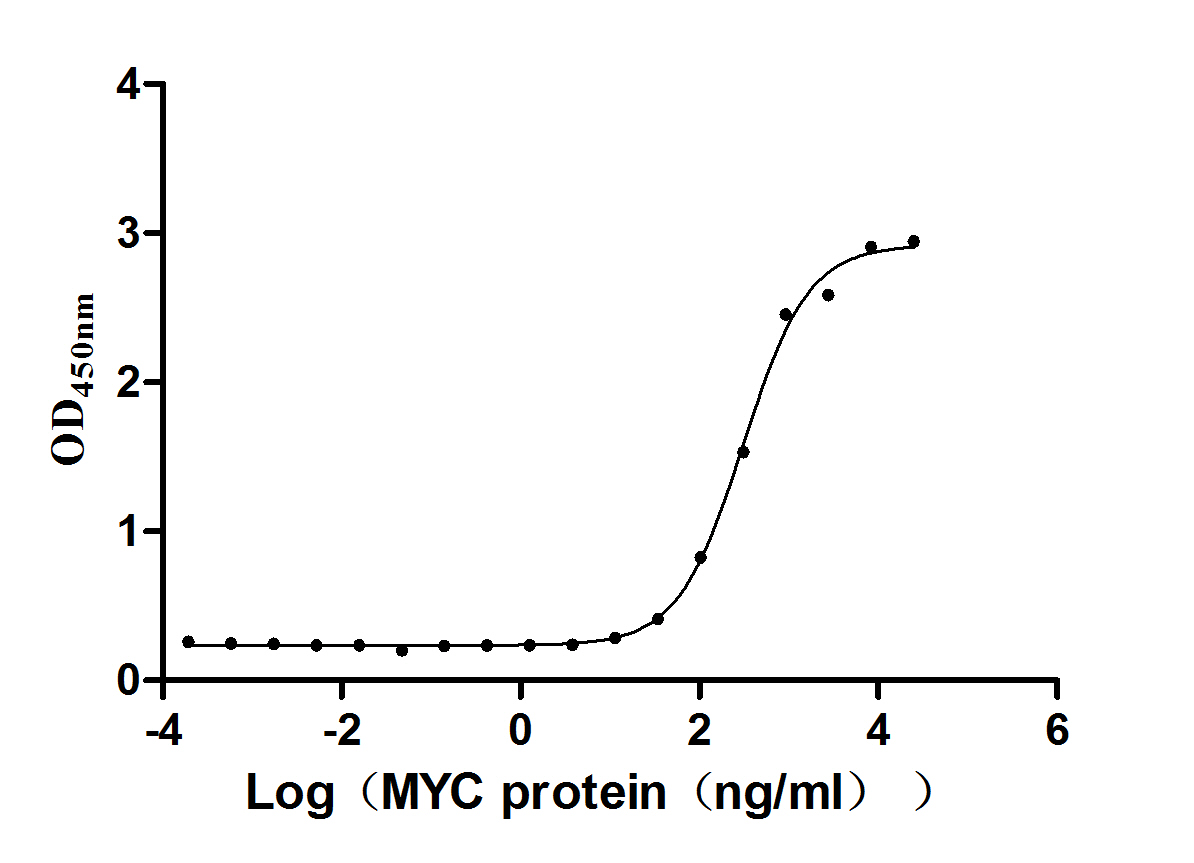
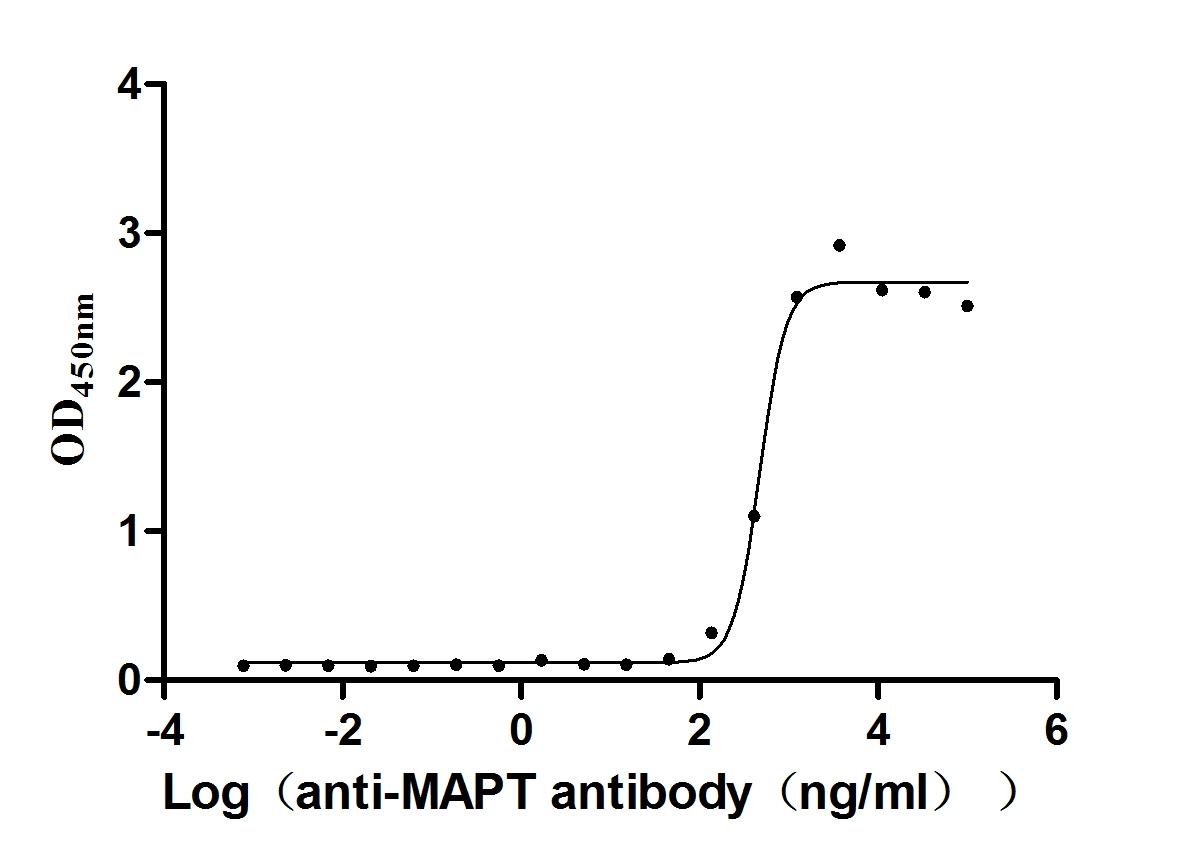


-AC1.jpg)
